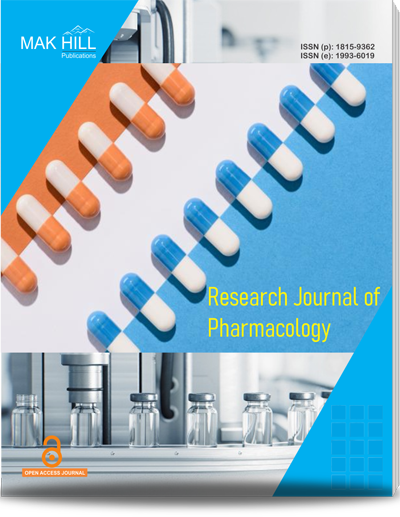
Research Journal of Pharmacology
ISSN: Online 1993-6019ISSN: Print 1815-9362
149
Views
2
Downloads
Abstract
Systemic antihistamines are crucial in the management of allergic conjunctivitis in Ghana. This study, therefore, determined the incidence of dry eyes in patients with allergic conjunctivitis and the risk of developing dry eyes associated with the management of allergic conjunctivitis using systemic antihistamines. A retrospective cohort study involving the review of medical records of 738 cases of allergic conjunctivitis before and after treatment in two prominent referral eye care centers in Ghana was conducted. Associations between variables were determined using Binary Logistical Regression and Fisher’s Exact Chi-Square (χ2). The 1 month incidence of dry eyes among Allergic Conjunctivitis (AC) patients was 17.5% (15.1% in those below 45 years and 27.2% in those above 45 years). Age was significantly associated (aOR:1.02, p<0.001) with dry eyes. Seasonal allergic conjunctivitis was the commonest (62.2%) ocular allergy while perennial allergic conjunctivitis patients were the most susceptible (aOR:1.79; p = 0.454) to Dry Eyes (DEs). A significant (p<0.001) association existed between occupation and DEs. Students 304 (41.2%) suffered AC most but were significantly less susceptible (aOR:0.24; p<0.001) to DEs while teachers 29 (3.9%) had the least prevalence of AC but had the highest risk (aOR:1.42; p = 0.483) of DEs. Of 60 (8.1%) AC patients with pterygium, 16 (26.7%) were found to have DEs (aOR:1.16; p = 0.050). Burning sensation was significantly (p<0.001) associated to DEs. Out of 441 (59.8%) patients treated with cetirizine (a systemic antihistamine) on the first visit, 103 (23.4%) had DEs on the second visit. Cetirizine usage was the most significant risk factor (aOR:2.79; p<0.001) for DEs. Allergic conjunctivitis patients treated with systemic antihistamines had a significantly high risk of dry eyes.
How to cite this article:
Emmanuel Kwasi Abu, Samuel Abokyi, George Asumeng Koffuor, Samuel Kyei and Carl Halladay Abraham. Dry Eyes: An Adverse Effect of Systemic Antihistamine Use in Allergic Conjunctivitis Management.
DOI: https://doi.org/10.36478/rjpharm.2012.71.77
URL: https://www.makhillpublications.co/view-article/1815-9362/rjpharm.2012.71.77